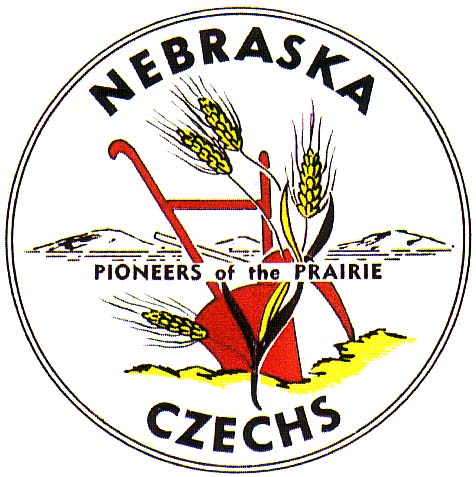
Christmas
(Vánoce)
(Vánoce)
Barborky December 4th
The feast of Saint Barbara, which falls on December 4, used to be connected with a lot of folk customs. The most famous of these was the cutting of cherry sprigs or Barborky. According to popular tradition, a sprig was cut at first light December 4 from a cherry tree that was at least 10 years old, and taken to a house where an unmarried girl lived.If the sprig bloomed on Christmas Eve, it meant that the girl would find a husband in the coming year. If the sprig bloomed earlier, the date of the wedding was brought forward by one month for every day in which it bloomed ahead of time. Today, Barborky are cut primarily as Christmas decorations for the home.
The feast of Saint Barbara, which falls on December 4, used to be connected with a lot of folk customs. The most famous of these was the cutting of cherry sprigs or Barborky. According to popular tradition, a sprig was cut at first light December 4 from a cherry tree that was at least 10 years old, and taken to a house where an unmarried girl lived.If the sprig bloomed on Christmas Eve, it meant that the girl would find a husband in the coming year. If the sprig bloomed earlier, the date of the wedding was brought forward by one month for every day in which it bloomed ahead of time. Today, Barborky are cut primarily as Christmas decorations for the home.
The charming tradition of St. Nicholas falls on the eve of St. Nicholas Day, December 5th. If you find yourself walking the streets on that evening, you may run into a group of strange characters: St. Nicholas (Mikuláš), the Angel (anděl) who represents the Good, and the Devil (čert) representing the Evil. All wear costumes. Mikuláš looks a bit like Santa Claus whose origin was supposedly inspired by St. Nicholas. All three characters walk the streets, stopping children and asking them if they were good in the past year. Most kids say yes and sing a song or recite a short poem. They are then rewarded with sweets, candy or other treats, which are handed out by the Angel. Bad kids would be put in the Devil's sack and taken to hell, or would only get a sack of potatoes or coal instead of candy - of course it does not really happen! The eve of St. Nicholas is especially fun in Prague. Parents bring their children to the Old Town Square where you can see the tradition in full swing roughly between 5 p.m. and 8 p.m. In small towns and villages, the three characters visit people's homes. The evening of December 5 is therefore an exciting (and scary) time for children! Children also receive St. Nicholas presents from their parents and relatives. The gift, e.g. sweets and chocolates, can be put into a stocking and hidden somewhere in the child's room. The St. Nicholas tradition is supposedly based on a 4th century Greek bishop named Nicholas who is said to have left a gift of money on the windowsill of three poor girls to enable them to get married.
Source: WFLA "Fraternal Herald" by Darcy Lipsius via http://www.myczechrepublic.com/czech_culture/czech_holidays/saint_nicholas.html
December 24 (Christmas Eve)
For many, December 24 (Štědrý den) is the most enjoyable day of Christmas holidays. Its Czech name literally means "Generous Day", probably for the wealth of food that has traditionally been served for Christmas dinner. Even poor families would make sure that their plates were full on this one day of the year.
December 24 is Adam and Eva's name day. The Christmas tree is decorated with traditional Czech Christmas ornaments in many households and preparations are made for the most festive dinner of the year. Christmas Eve is associated with many superstitions that usually relate to life, love, and destiny that awaits one in the year to come. According to one Czech Christmas custom, one is supposed to fast all day to see the "golden piglet" (zlaté prasátko) in the evening.
Christmas Dinner
Dinner is served after sunset (traditionally, it should not be served until after the first star has come out) and consists of carp and potato salad, sometimes preceded by mushroom, sauerkraut or fish soup. Did you know that carp can supposedly be prepared a hundred different ways? Christmas carp is specially raised in manmade ponds and then sold from large tubs placed on the streets and town squares a few days before Christmas. You will not see this sight at any other time of the year. Some families keep their carp in the bathtub for several days as a temporary pet for their children... Dinner can be finished with dessert, such as apple strudel. A traditional Christmas bread called vánočka (similar to the Jewish challa) used to be a part of the Christmas dinner in the past but today it has largely lost its Christmas connotation and is available year-round.
Christmas Presents
After dinner, everyone around the table may sing Christmas carols before moving to the Christmas tree, which is all lit up and beautiful. By then, presents have been placed under the tree. Czech children believe that Christmas gifts are brought by Baby Jesus (Ježíšek) who comes into the room through the window to leave the presents. Unlike Santa Claus, Baby Jesus is a rather abstract figure with no particular physical image attached to him, and no one knows where he lives. Just like Santa though, he receives wish-list letters from Czech children a few weeks before Christmas.
Midnight Mass
Some people end Christmas Eve by attending the midnight mass (půlnoční mše) at a local church.
December 25 – 26
Czech Republic Christmas stretches over December 25 and 26, which are also referred to as the First and Second Christmas Holidays, or the Christmas Feast (Boží hod vánoční) and St. Stephen's Day (Sv. Štěpán). On St. Stephen's Day, children, students, teachers, and the poor used to go around people's homes singing Christmas carols. Nowadays, families stay at home and relax or visit relatives and friends to share the special time.
For many, December 24 (Štědrý den) is the most enjoyable day of Christmas holidays. Its Czech name literally means "Generous Day", probably for the wealth of food that has traditionally been served for Christmas dinner. Even poor families would make sure that their plates were full on this one day of the year.
December 24 is Adam and Eva's name day. The Christmas tree is decorated with traditional Czech Christmas ornaments in many households and preparations are made for the most festive dinner of the year. Christmas Eve is associated with many superstitions that usually relate to life, love, and destiny that awaits one in the year to come. According to one Czech Christmas custom, one is supposed to fast all day to see the "golden piglet" (zlaté prasátko) in the evening.
Christmas Dinner
Dinner is served after sunset (traditionally, it should not be served until after the first star has come out) and consists of carp and potato salad, sometimes preceded by mushroom, sauerkraut or fish soup. Did you know that carp can supposedly be prepared a hundred different ways? Christmas carp is specially raised in manmade ponds and then sold from large tubs placed on the streets and town squares a few days before Christmas. You will not see this sight at any other time of the year. Some families keep their carp in the bathtub for several days as a temporary pet for their children... Dinner can be finished with dessert, such as apple strudel. A traditional Christmas bread called vánočka (similar to the Jewish challa) used to be a part of the Christmas dinner in the past but today it has largely lost its Christmas connotation and is available year-round.
Christmas Presents
After dinner, everyone around the table may sing Christmas carols before moving to the Christmas tree, which is all lit up and beautiful. By then, presents have been placed under the tree. Czech children believe that Christmas gifts are brought by Baby Jesus (Ježíšek) who comes into the room through the window to leave the presents. Unlike Santa Claus, Baby Jesus is a rather abstract figure with no particular physical image attached to him, and no one knows where he lives. Just like Santa though, he receives wish-list letters from Czech children a few weeks before Christmas.
Midnight Mass
Some people end Christmas Eve by attending the midnight mass (půlnoční mše) at a local church.
December 25 – 26
Czech Republic Christmas stretches over December 25 and 26, which are also referred to as the First and Second Christmas Holidays, or the Christmas Feast (Boží hod vánoční) and St. Stephen's Day (Sv. Štěpán). On St. Stephen's Day, children, students, teachers, and the poor used to go around people's homes singing Christmas carols. Nowadays, families stay at home and relax or visit relatives and friends to share the special time.
